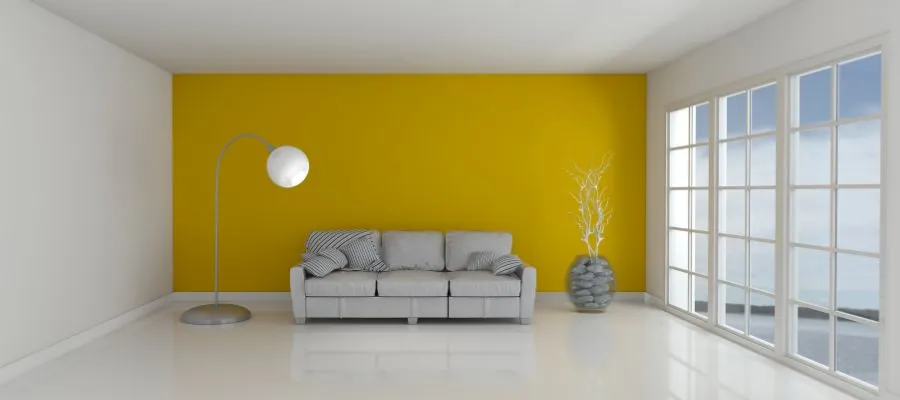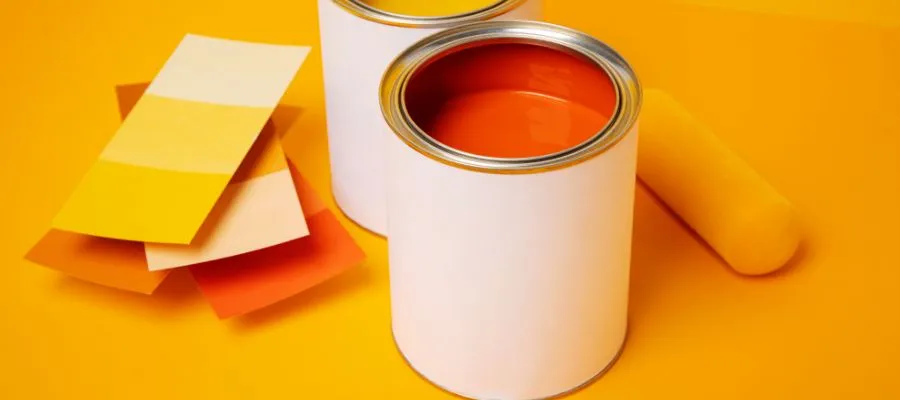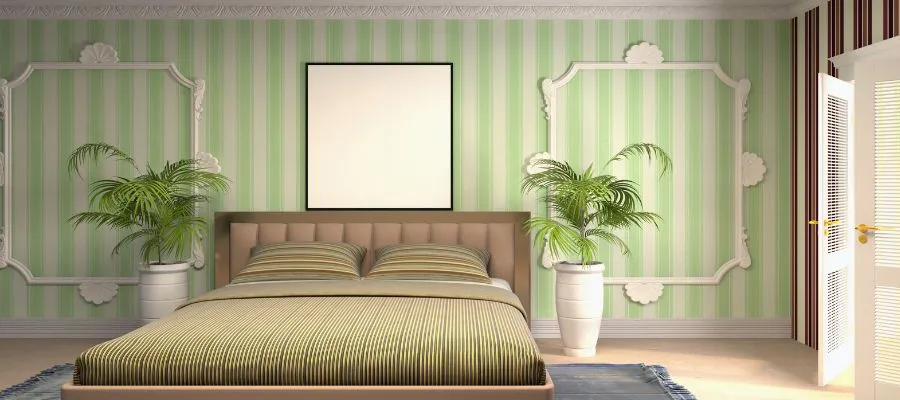According to Vastu Shastra, an ancient Indian science, colours are important for creating a peaceful and happy home. When choosing Vastu colours for your home, you should consider what each colour means, how it makes you feel, and what the room is used for. The appropriate colours can help you attract good vibes, improve mental clarity, and boost your general health. In this blog, Brick & Bolt talks about various Vastu colours that are good for each room in your home, making it a peaceful and lucky place to live.

Vastu Colours For Living Room
The living room is the centre of the house, where people gather to relax and chat. Vedic principles say the living room should have warm colours like brown, cream, light yellow, or pastel green. These colours make people feel warm, peaceful, and connected, which makes it easier for family and friends to get along.
Vastu Colours For Bedroom
The bedroom is your haven, a spot to relax, recharge, and connect with yourself. As per Vastu, the bedroom colour must be soothing to help people relax and sleep well. Choose soft colours like blue, green, lavender, or light pink to create a calm space to relax after a long day. Avoid bright or highly stimulating colours that could make it hard for you to sleep.
Vastu Colours For Kitchen
Vastu Shastra says the kitchen represents food and wealth, so it’s important to pick colours that make it feel more energetic. The kitchen should have shades of yellow, orange, red, or light green because they give you energy and make you feel like you have enough. These bright colours fill the room with good vibes, which makes cooking more fun and brings families together around tasty meals.
Vastu Colours For Master Bedroom
Vastu Shastra says the master bedroom is important because it provides rest, renewal, and closeness. The colours you choose for the room are very important for making it a harmonious and lucky place. Soft shades of blue, like sky blue or powder blue, are thought to help people feel calm and relaxed, leading to better sleep and less worry. Sage green and pale green are two shades of green that draw from nature’s healing energy and help keep your body and mind healthy. Colours like lavender and purple are soothing and create a calm atmosphere that helps people relax and sleep better. Neutral colours, like brown or cream, will always look good because they add warmth and style while keeping the space balanced. By using these Vastu colours in the master bedroom, you can make a healing space for both your mind and body that encourages deep relaxation, closeness, and renewal.
Vastu Colours For Pooja Room
According to Vastu Shastra, the pooja room is important for worship, meditation, and other spiritual activities. The colours you choose for it greatly impact how lucky and energetic it is. White is a great colour for pooja rooms because it is a pure and holy light. It also stands for clarity, peace, and spiritual enlightenment. Soft shades of yellow or gold are also lucky because they stand for wealth, abundance, and divine benefits. The colour green, linked to growth and renewal, can make the sacred area feel more balanced and alive. It is best to avoid colours that are too dark or stimulating in the pooja room because they might make it less peaceful. By using colours that are good for Vastu in the pooja room, you can make it a place that encourages spiritual growth, reverence, and connection with God, leading to a deeper feeling of devotion and inner peace.
How to Choose the Right Vastu Colours?

- When choosing colours for a room, consider how much natural light it receives. Lighter shades make a room look bigger and brighter when little natural light is in it.
- While following Vastu rules, prioritise your comfort and tastes. Choose colours that speak to you and make you feel good.
- Keep your home’s colour scheme balanced by using colours that go well together and flow easily from one room to the next.
- If you need help with what to do, talk to a Vastu expert or an interior designer who understands Vastu principles. They can advise you based on your home’s plan and orientation.
Wall Colours For Your Home According to Vastu Direction

Based on the principles of Vastu Shastra, let’s look at the best wall colours for each direction of your home to bring balance, happiness, and wealth.
North wall colour as per Vastu:
According to Vastu Shastra, the North way brings luck, wealth, and chances. If you want to get more wealth into your life, paint the walls facing north with cool, soothing colours like blue, green, or white. These colours make you feel calm and stable, and they let good energy flow through you, which can help you make money and be successful.
East wall colour as per Vastu:
According to Vastu Shastra, the East face represents the rising sun, representing fresh starts, wisdom, and life. You can use the energy of this lucky direction by painting your east-facing walls bright colours that make you feel good, like light green, orange, or yellow. These colours make you feel happy, hopeful, and full of life, which gives the place new energy and creativity.
West wall colour as per Vastu:
According to Vastu Shastra, the west way is like the setting sun, which stands for completion, balance, and happiness. For walls facing west, choose warm, earthy colours like beige, cream, or light brown to create balance and harmony. These colours make a space feel warm and welcoming, which helps people relax and feel good while making life’s changes easier.
South wall colour as per Vastu:
According to Vastu Shastra, the south direction is linked to power, stability, and safety. To strengthen this area’s energy, you could paint the walls facing south with deep, grounding colours like dark brown, red, or maroon. These colours make you feel safe, keeping away bad things and building your inner power and resilience.
What are the Colours to Avoid in the Home, as per Vastu?
Black:
People often think of black as a colour of power, class, and mystery, but Vastu Shastra says that it should not be used much, if at all. Black can absorb and hold on to negative energy, making the home feel heavy and stuck. A little black can give your decor depth and contrast, but you shouldn’t use it too much, especially in places where you want to relax and recharge.
Red:
Usually, red means desire, vitality, and wealth, but if you use it too much in your home, its strong energy can be too much to handle. Vastu Shastra says that bright shades of red should be avoided because they make people angry, restless, and impulsive. If you like the energy of redo, choose softer shades or use it as an accent colour instead of painting your whole walls bright red.
Dark Brown:
Because dark brown resembles earthy tones and natural materials, it might seem like a safe and soothing colour for your home decor. However, Vastu Shastra says that too dark a shade of brown is bad because it is thought to make the homeless energetic, creative, and enthusiastic. Instead of choosing deep browns, think about lighter and warmer tones that make your areas feel more welcoming and balanced without being too heavy.
Grey:
Grey is often considered neutral, classy, and modern so that it might seem like a good choice for contemporary designs. However, Vastu Shastra says not to use too much grey because it reduces the space’s positive energy and vigour. A touch of grey can make your decor look more sophisticated, but you need to balance it with warmer colours so the room doesn’t feel cold, dull, or boring.
By using Vastu colours in your home’s decor, you can make it a peaceful place to live that promotes happiness, balance, and health. If you want to create a place that is peaceful and full of good energy, use Vastu principles to help you choose the colours you use in your home.
Take advantage of the way colours can change things and start making your home look beautiful while also bringing joy, harmony, and plenty to every corner.
To know more about Vastu, clink the link below.
Ultimate Guide to Vastu-Compliant Plot Selection

